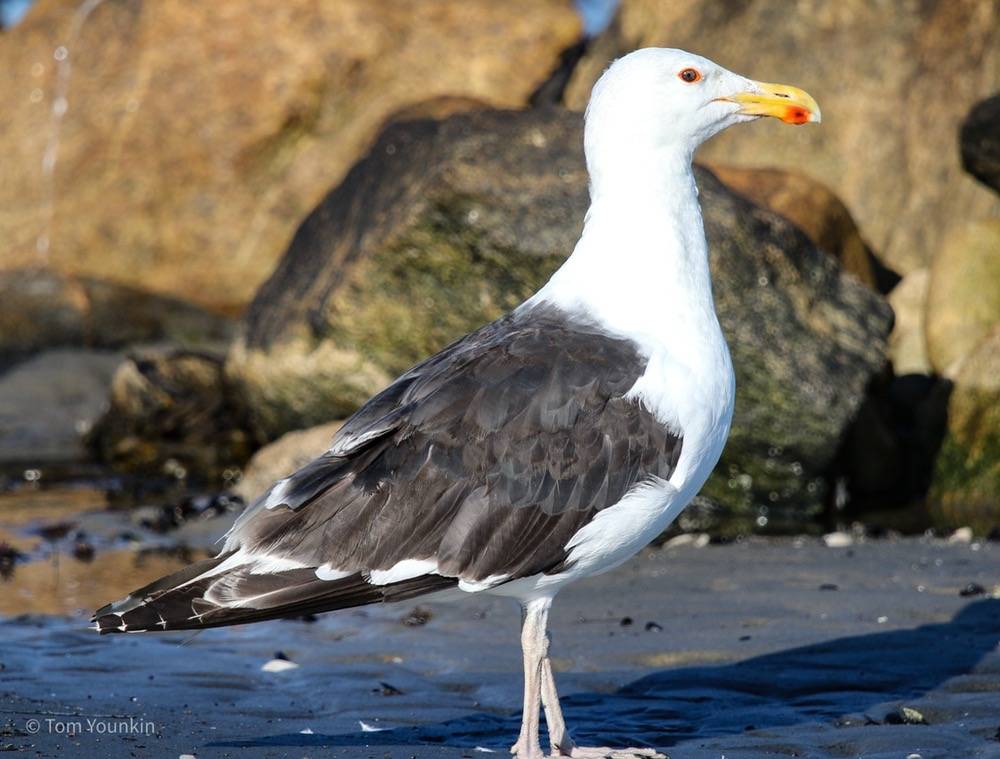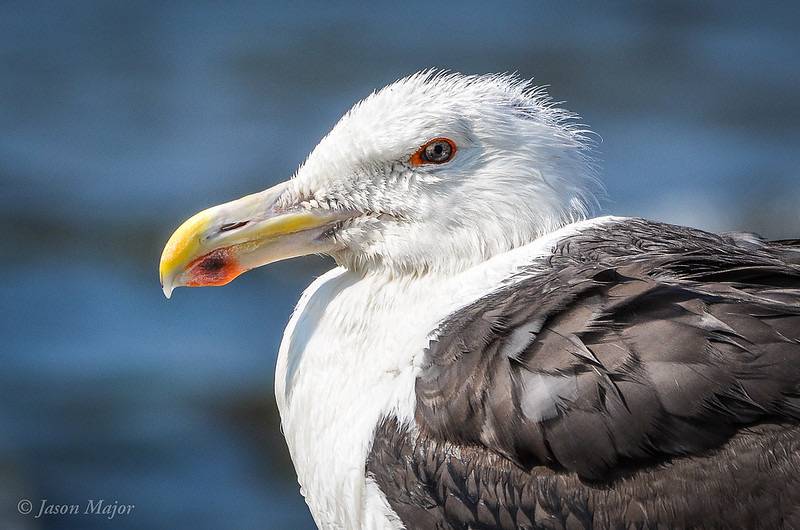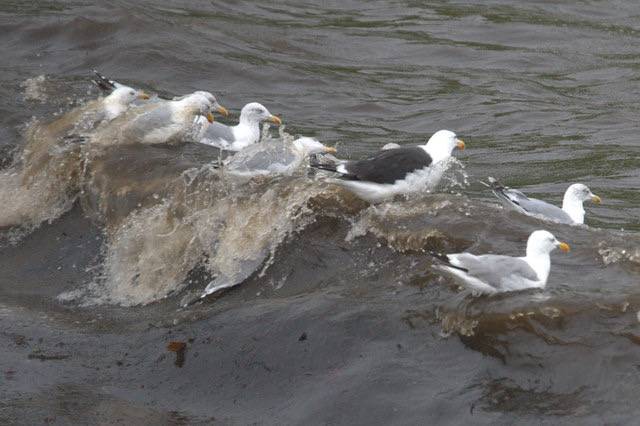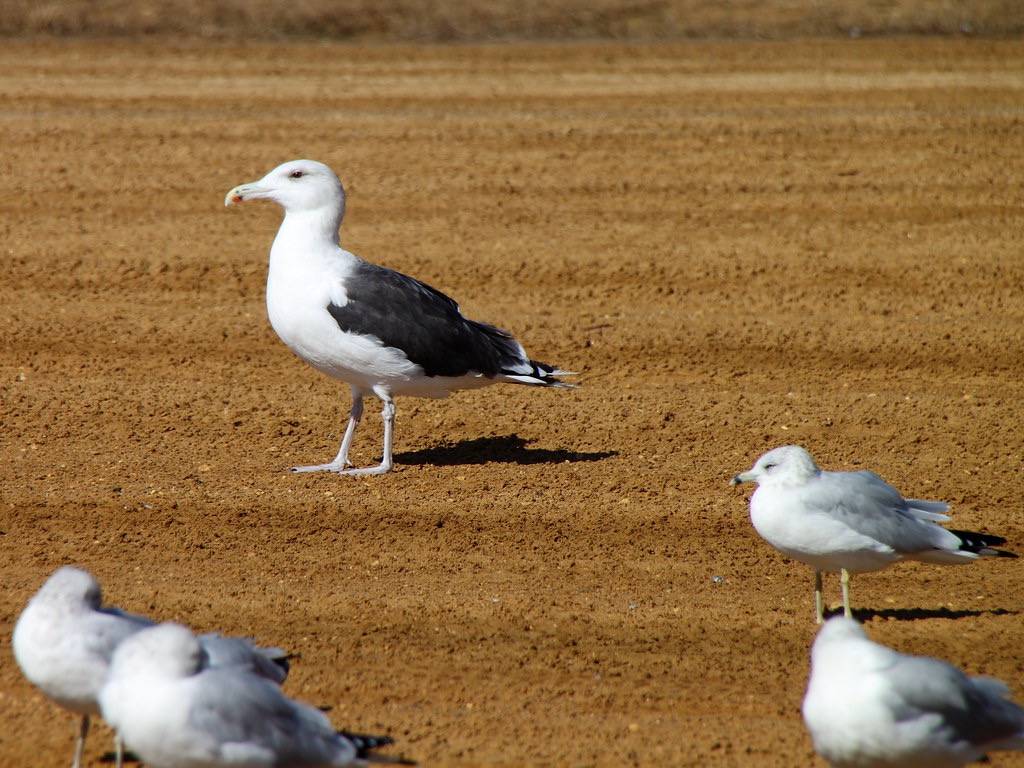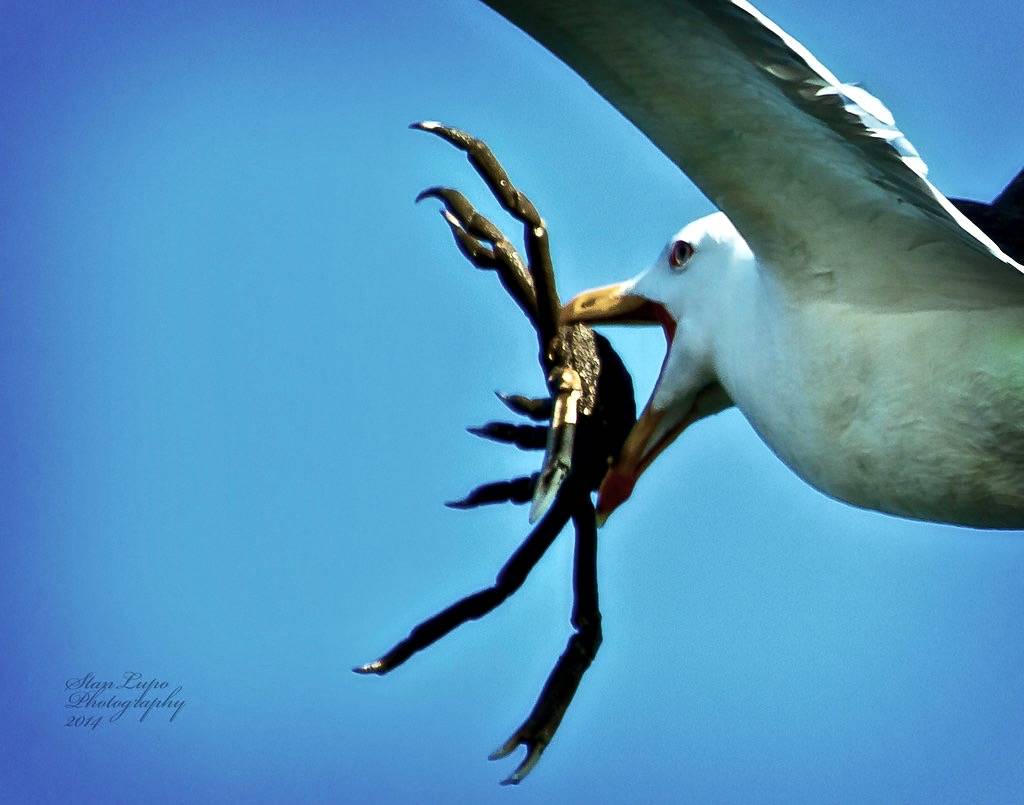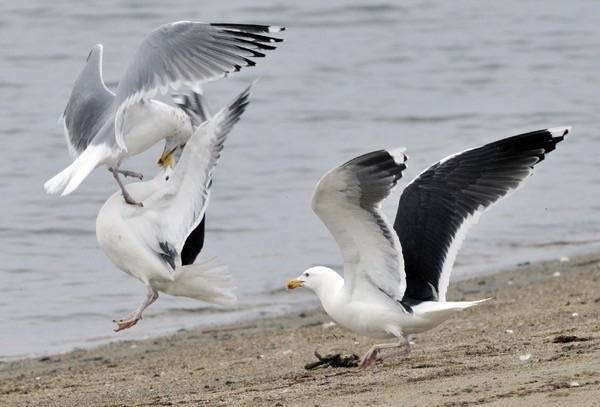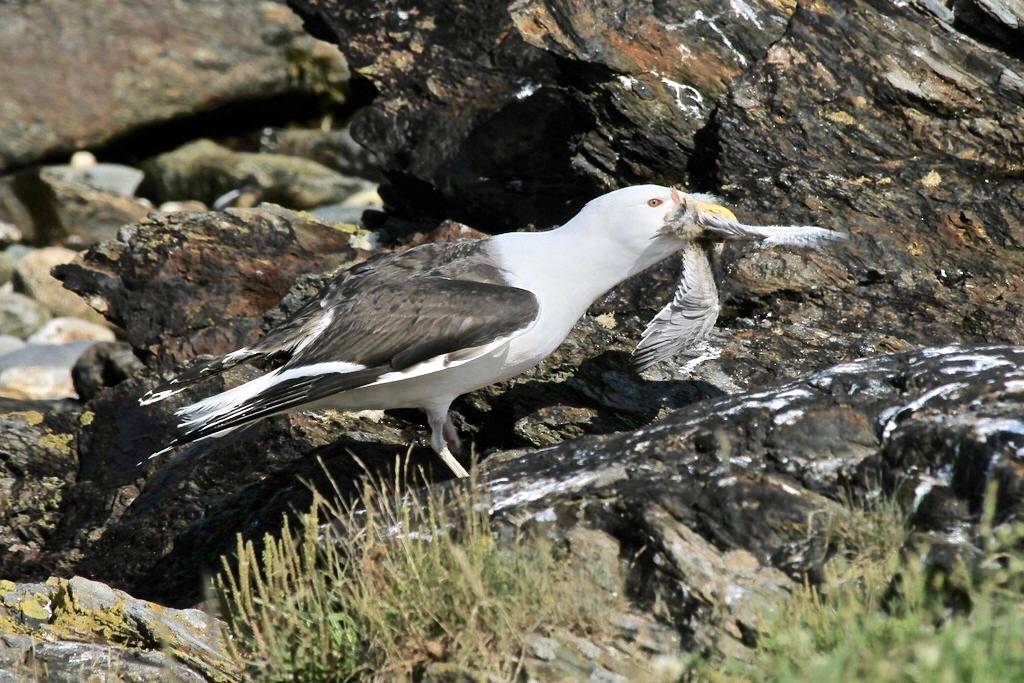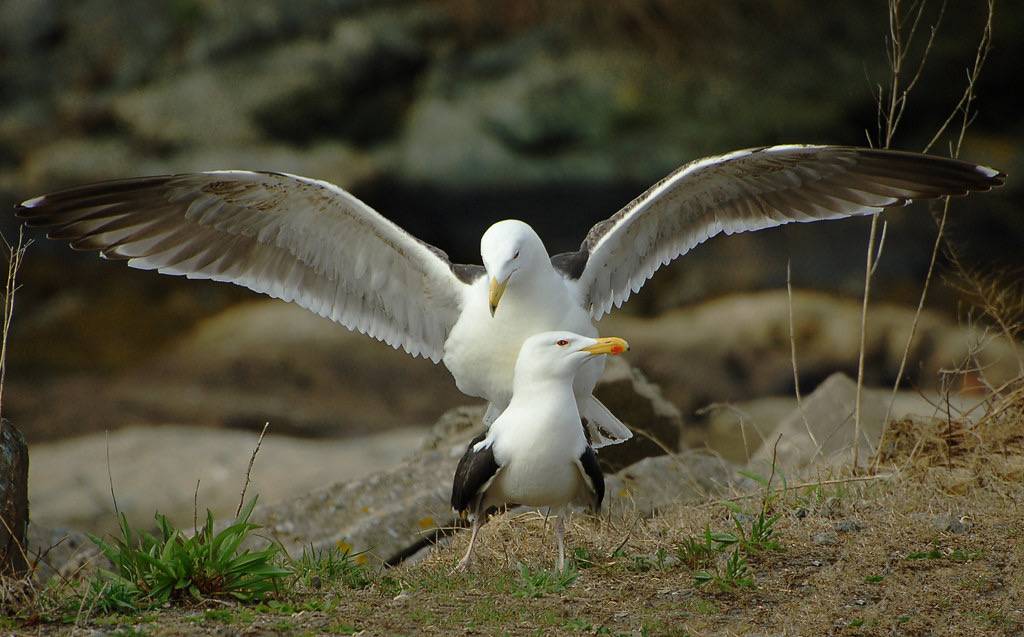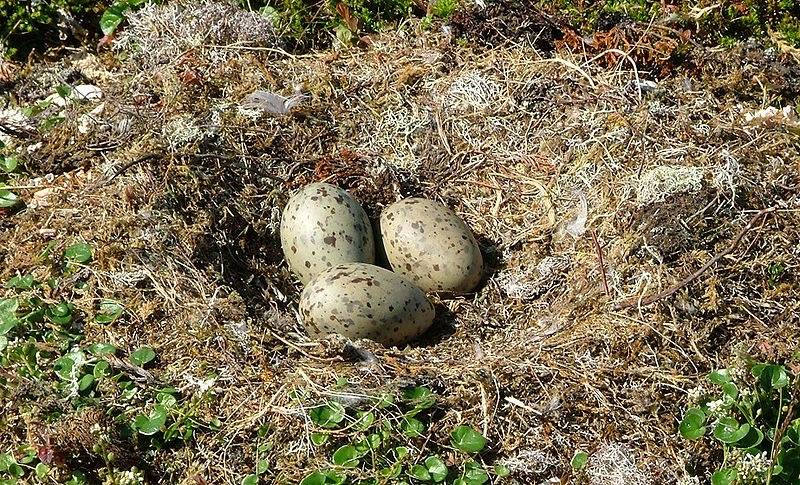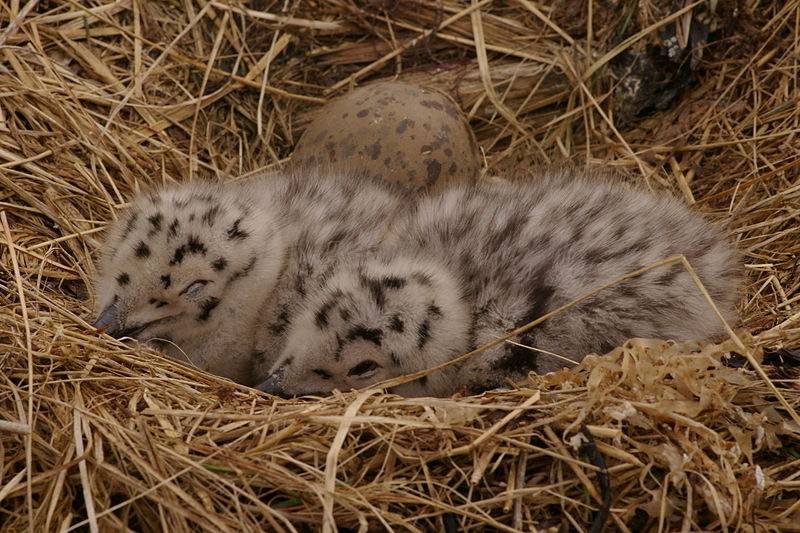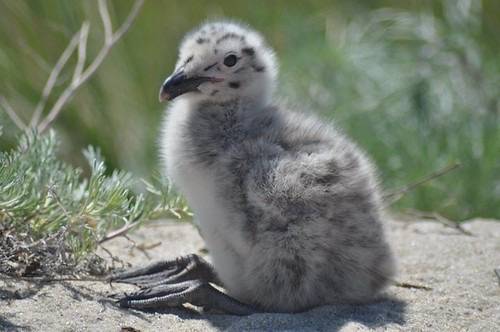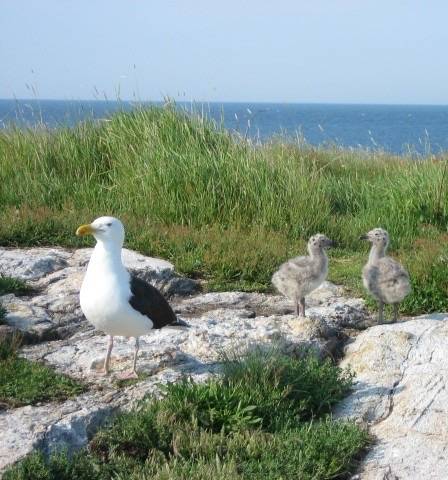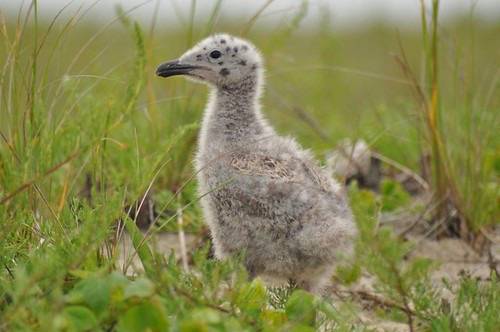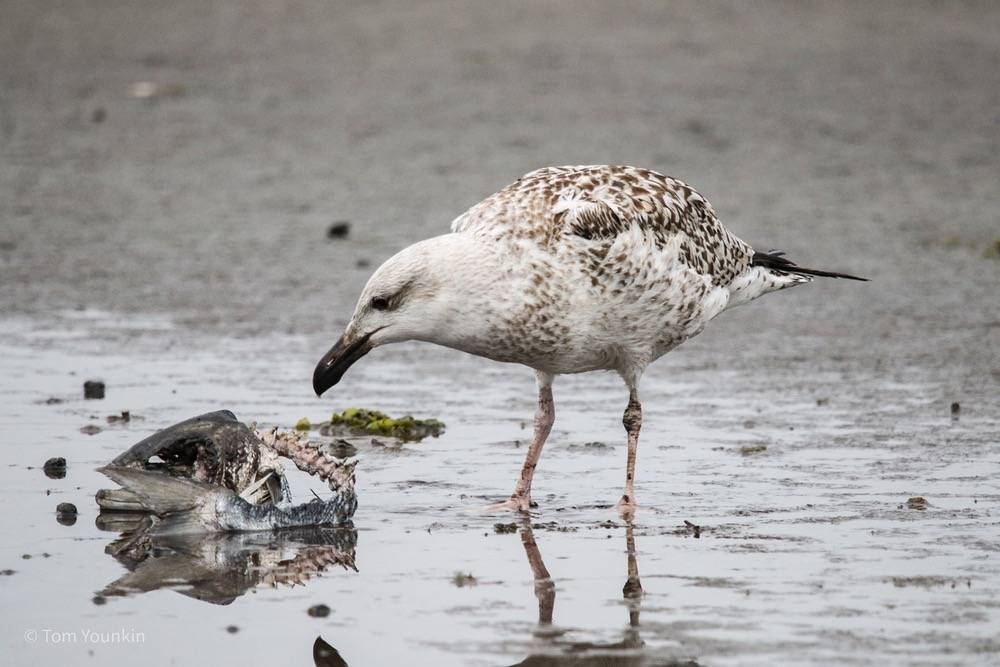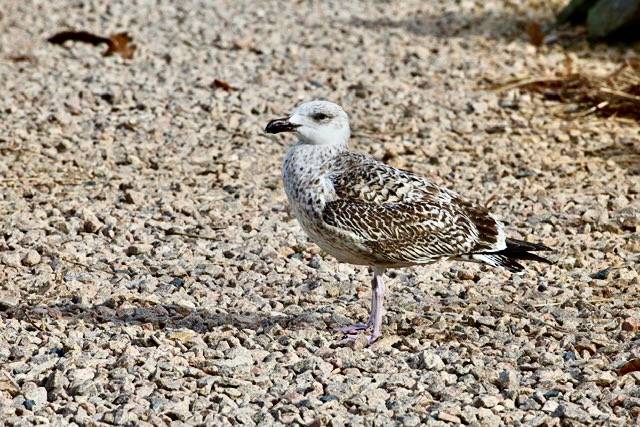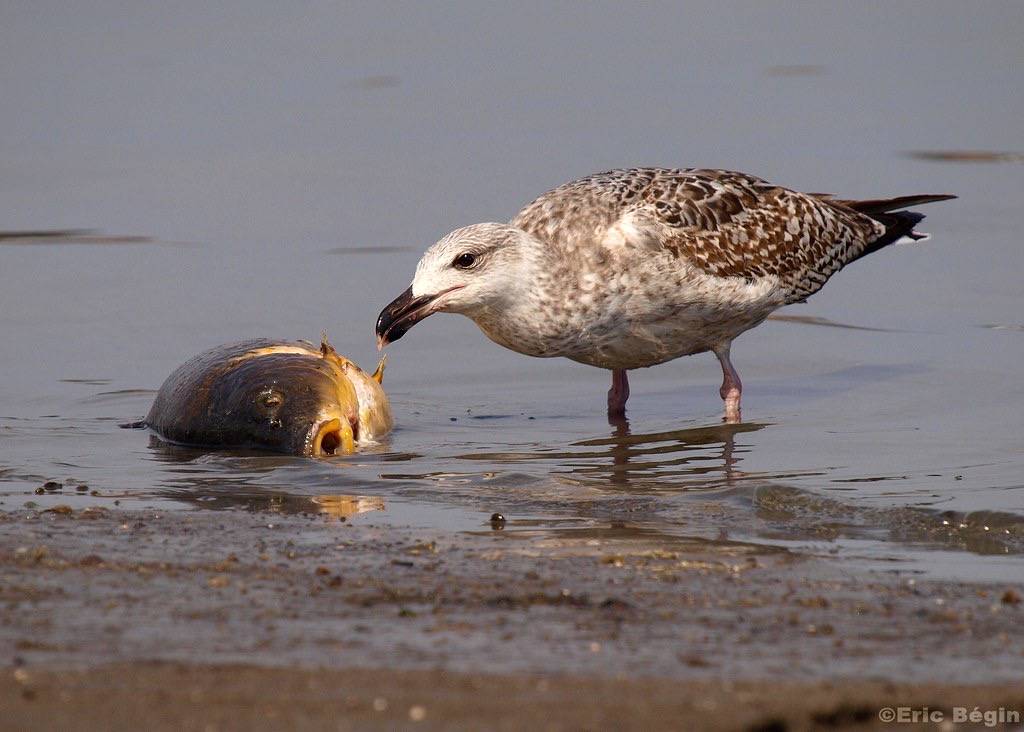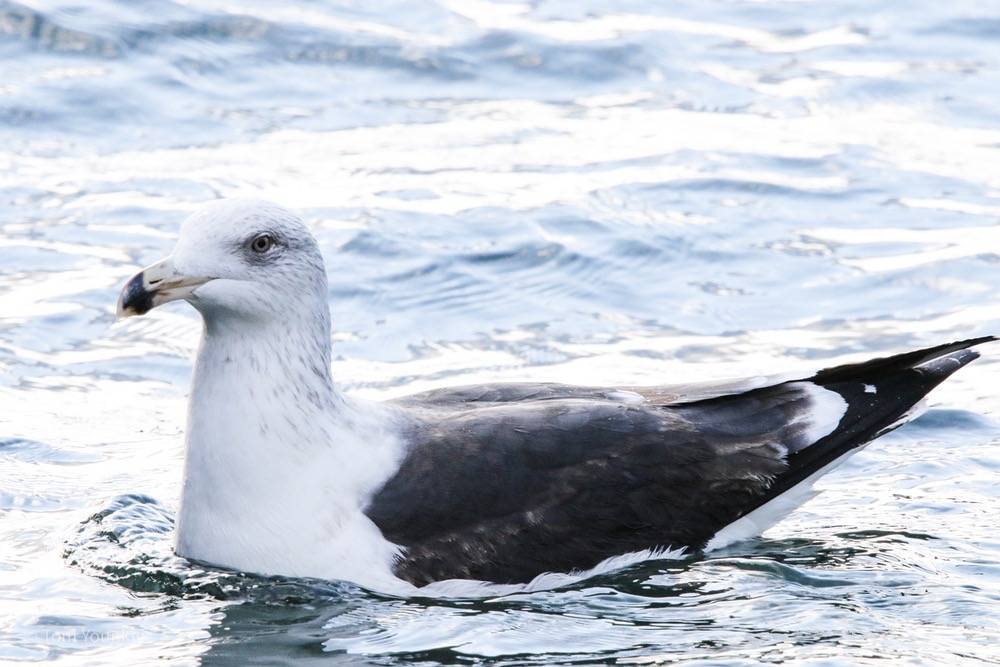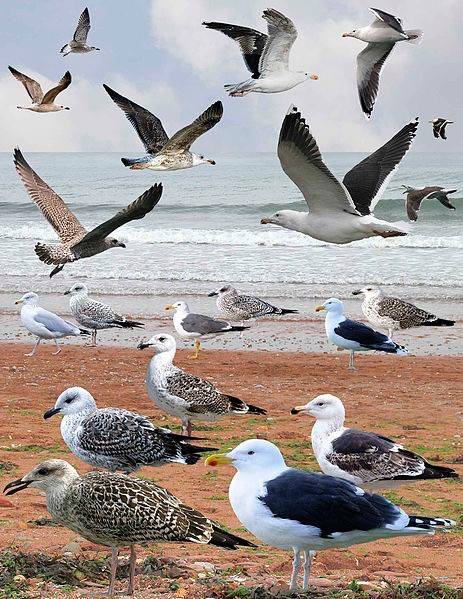Great Black-backed Gull
The Great Black-backed Gull is the largest gull in the world. Its size is especially impressive when seen next to the Herring Gulls and Ring-billed Gulls that also frequent Salter Grove. The causeway offers the best vantage point for seeing this King of Gulls in either North or South Coves, on the northern arm of the breakwater, or on the rocky islets south of the park.
Small numbers are recorded throughout the year at Salter Grove but it does not breed in the park. It prefers to nest in open coastal habitats like barrier beaches, cliff tops, islands, and salt marshes that are isolated from terrestrial predators.
Great Black-backed Gulls primarily feed on fish but also eats crustaceans, mollusks as well as the eggs, chicks and adults of other bird species. An adult was observed methodically feeding on a motionless male Hooded Merganser on one of the islets south of Rock Island. As majestic as they look and as capable as they are in getting their own food, they are bullies--often stealing food collected by other birds.
As in many other aquatic species, the newly hatched young of the Great Black-baked Gull are precocial and can walk and swim a day or so after hatching. Despite this early independence of movement, they are fed by both parents for at least two months and some even stay with parents for months after leaving the breeding colony. It takes four years of incremental changes for juveniles to acquire the distinctive adult plumage.
Historically, it was known to breed from the northwestern most region of Russia, coastal areas of northern Europe, across the Atlantic along the coasts of Iceland, Greenland, and northern Canada. However, the wealth of discarded human food at landfills has expanded the breeding range of the Great Black-backed Gull in recent decades. It now breeds as far south as North Carolina, and has also moved inland to large freshwater lakes.

